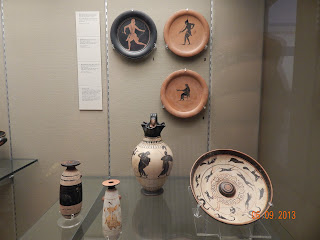Stepping into the majestic halls of the British Museum feels like embarking on a journey through time, where centuries of human civilization unfold before your eyes. My visit to this iconic institution was nothing short of a mesmerizing experience, filled with awe-inspiring artifacts, historical wonders, and cultural riches.
The Great Court
As I entered the British Museum, the first sight that greeted me was the breathtaking Great Court, with its soaring glass roof and impressive architecture. This vast space, bustling with visitors from around the globe, serves as the heart of the museum, connecting various departments and galleries.
Department of Ancient Egypt
One of the highlights of my visit was exploring the Department of Ancient Egypt. Walking among the towering statues of pharaohs, intricate hieroglyphs, and mummified remains, I couldn't help but marvel at the ingenuity and sophistication of ancient Egyptian civilization. The Rosetta Stone, with its inscriptions in three scripts, stood as a testament to the decipherment of hieroglyphs, a pivotal moment in the history of archaeology.
Department of Greece and Rome
Continuing my journey, I found myself immersed in the world of classical antiquity in the Department of Greece and Rome. From the majestic Parthenon sculptures to the exquisite marble statues of gods and emperors, each artifact told a story of power, beauty, and myth. The Elgin Marbles, controversially acquired from the Parthenon, sparked reflection on the ethics of cultural heritage preservation.
In the Department of Asia, I encountered a diverse array of cultures and civilizations spanning millennia. From the intricate carvings of ancient Mesopotamia to the delicate porcelain of imperial China, each artifact provided a glimpse into the rich mosaic of Asian history.
The British Museum in London has a collection of historical relics that relate to Bible events and characters. The museum's collections include inscribed objects, scripts, and pictorial reliefs that provide evidence of events narrated in the Bible. The museum also has documents from western Asia, Greece, Egypt, and Asia Minor that date from the period of the Patriarchs to the New Testament times, c. 2000 BC to c.AD 100.
The museum also has exhibits on the cultures and empires from biblical times, including the Egyptian, Assyrian, and Babylonian Empires of the Old Testament, and the Greek and Roman cultures of the New Testament. Some say the museum is a great place to see historical events from the Bible, and others say the museum brings the pages of the Bible to life.
Conclusion
As I concluded my visit to the British Museum, I couldn't help but feel a profound sense of gratitude for the opportunity to witness firsthand the wonders of human civilization. From the ancient artifacts of Egypt to the treasures of India, each department offered a unique perspective on our shared history and heritage. My journey through the British Museum was not just a tour of galleries and exhibitions but a voyage through time, enriching my understanding of the past and inspiring a deeper appreciation for the diversity of human culture.










































Comments
Post a Comment